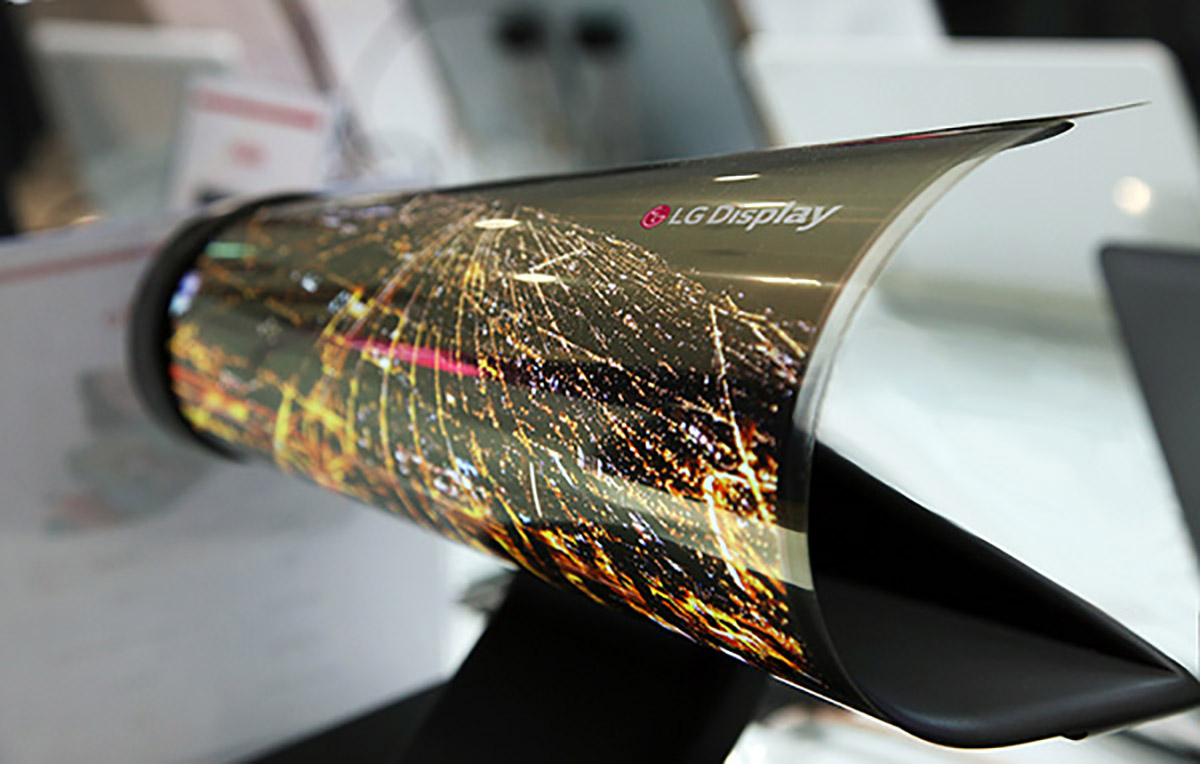Samsung is the company that we most closely relate the idea of a foldable smartphone to, and the company has one that is said to be almost ready for release. That doesn’t mean that we should expect Apple to just sit and watch from the sidelines, though, with the company having now been awarded a new patent for, you guessed it, a foldable display.
The expectation is that such a display would be used in a foldable iPhone of some sort.

While Apple, like others, has been producing curved OLED displays for a little while now, the concept of a fully foldable display has not yet made its way to market, despite Apple and others having been working on such a display for years. The displays used in the current generation of iPhones already bends at the bottom of the screen in order to allow its controllers and cables to be hidden while still having a chin-less chassis, but that’s quite a way from a foldable display.
Around a year ago, there was talk of both Apple and LG working together to produce a display, with Apple choosing that particular partner as it did not trust Samsung and wanted to avoid leaks. A patent application in late 2017 also described a display that could be “opened and closed like a book,” while today’s patent relates to a hinge that could be used in those situations.
Electronic devices may be provided that contain multiple housing portions. The housing portions may be coupled together using hinges. The hinges may include hinges based on a three-bar linkage, hinges based on a four-bar linkage, hinges with slotted members, hinges formed from flexible support structures, and hinges based on flexible housing structures. Flexible displays may be mounted to the housing portions overlapping the hinges. When the housing portions in a device are rotated relative to each other, the flexible display may bend. The hinge may be configured to allow the flexible display to be placed in a front-to-front configuration in which an active side of the display faces itself or a back-to-back configuration. Engagement structures may be used to help the housing grip external objects and to hold the housing portions together. The hinges may be provided with rotational detents to help hold the flexible display in desired positions.
Of course, as with all of Apple’s patents, this doesn’t mean that we will ever see a device that takes advantage of it. Apple throws a lot of patents at the wall to see what sticks, although I do suspect that this is one patent that will make a comeback at some point in the future.

(Source: USPTO)
You may also like to check out:
- iOS 12.1 Final Download Could Be Available Next Week With iPhone XR Release
- Download: iOS 12.1 Beta 4 IPSW Links, OTA Released Alongside tvOS 12.1 And watchOS 5.1 Betas
- Jailbreak iOS 12.0.1 Update: Apple Stops Signing iOS 11.4.1, Here’s What That Means
- How To Downgrade iOS 12.0.1 To iOS 12.0 / 11.4.1
- iOS 12.0.1 Release Notes, Changes, Security Content Detailed By Apple
- Download: iOS 12.0.1 IPSW Links, OTA Update For iPhone And iPad Released
- Jailbreak iOS 12.0.1 / 12 / 12.1 On iPhone And iPad [Status Update]
- Download unc0ver Jailbreak IPA For iOS 11.4 And iOS 11.3.1
- Adobe Photoshop CC Full Version Coming To iPad, Sign Up For Beta Now
You can follow us on Twitter, add us to your circle on Google+ or like our Facebook page to keep yourself updated on all the latest from Microsoft, Google, Apple, and the Web.

